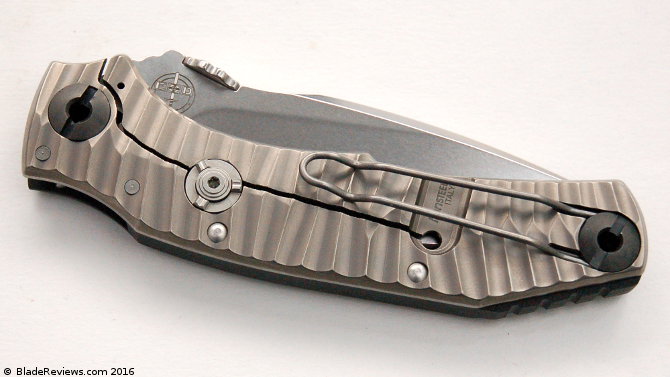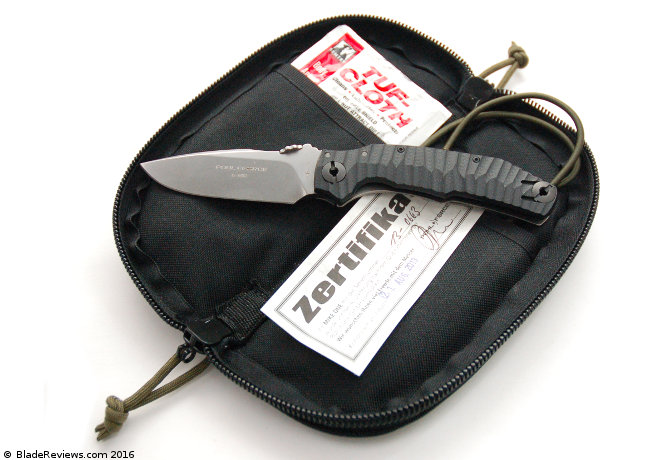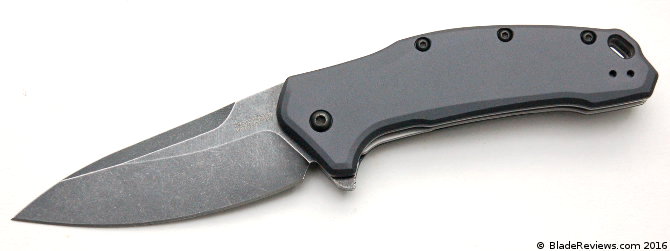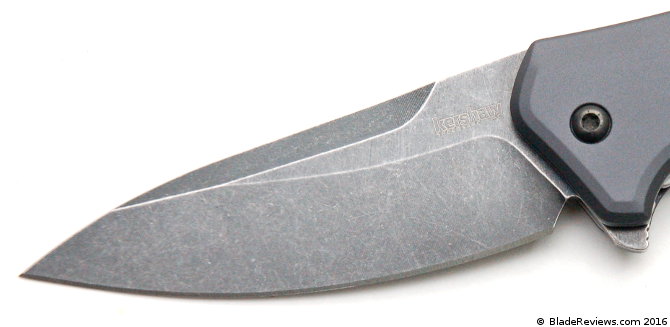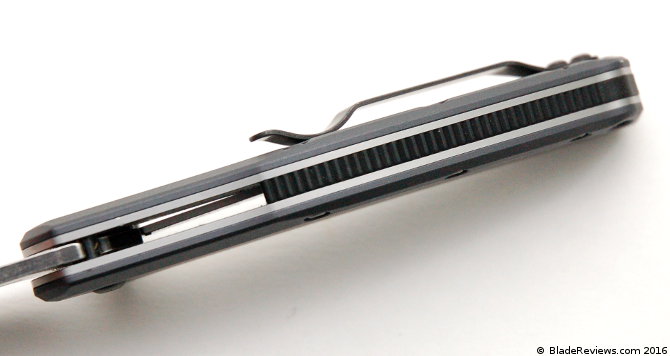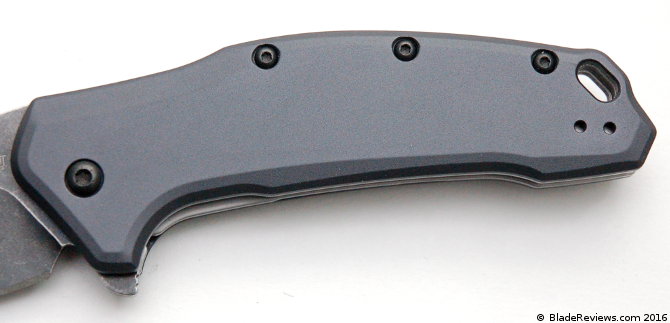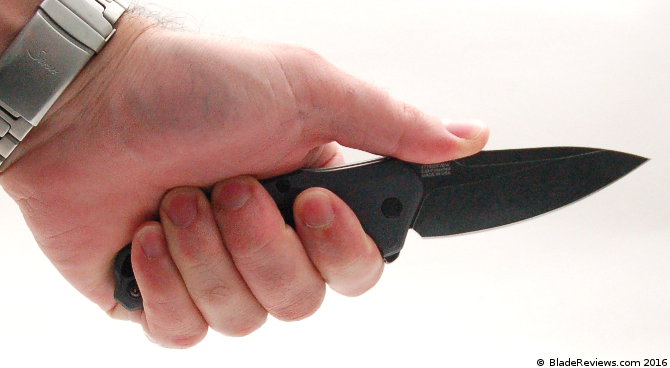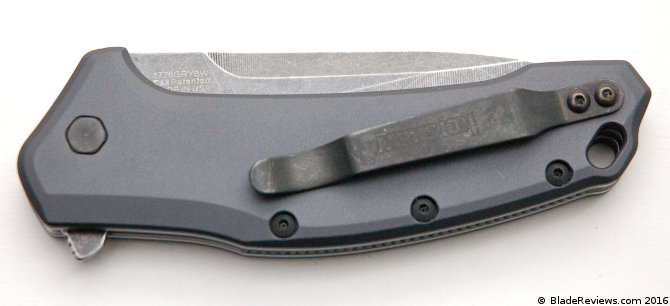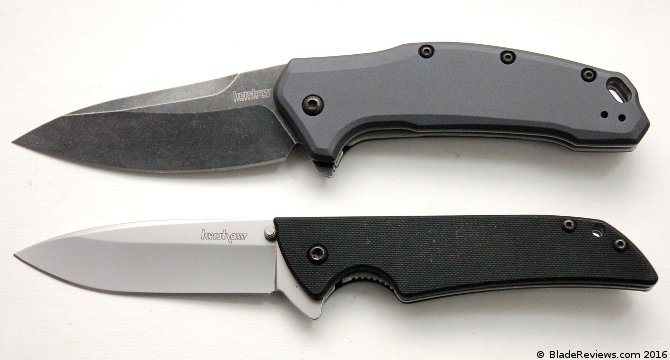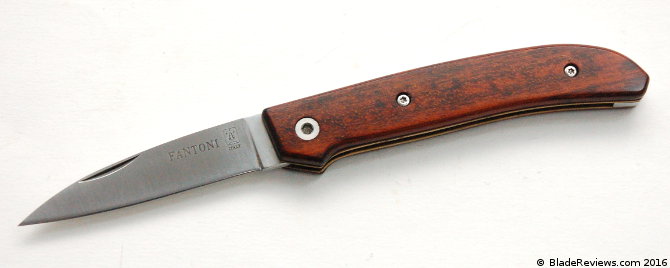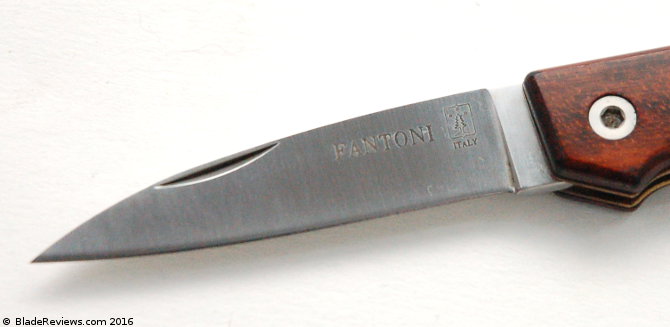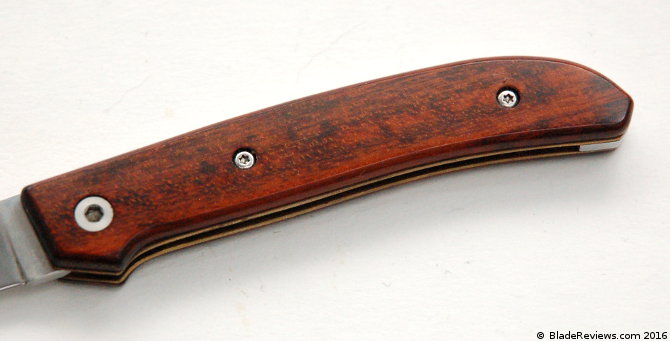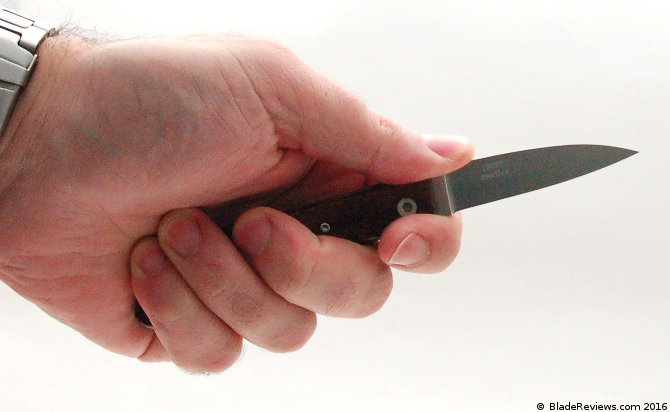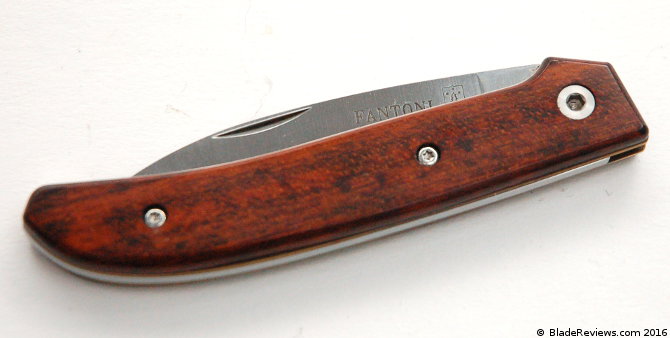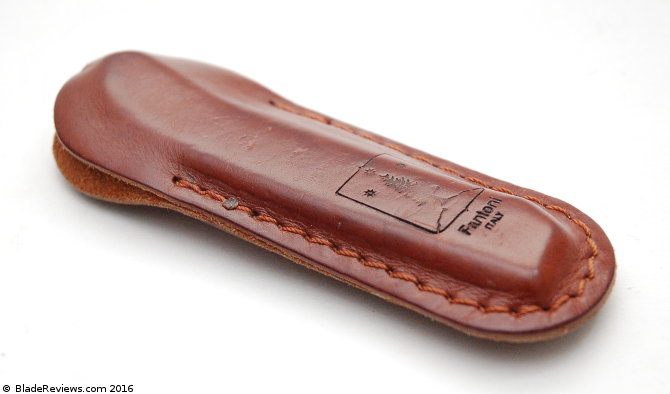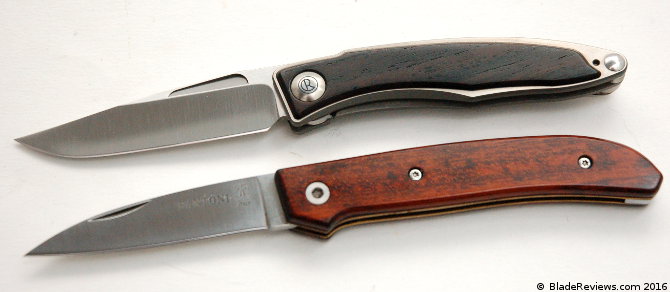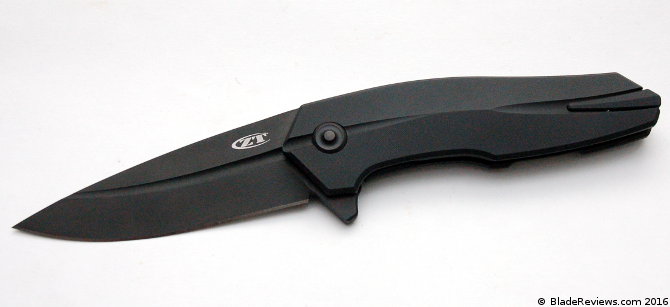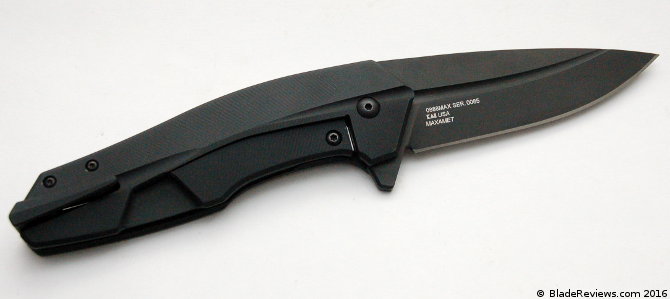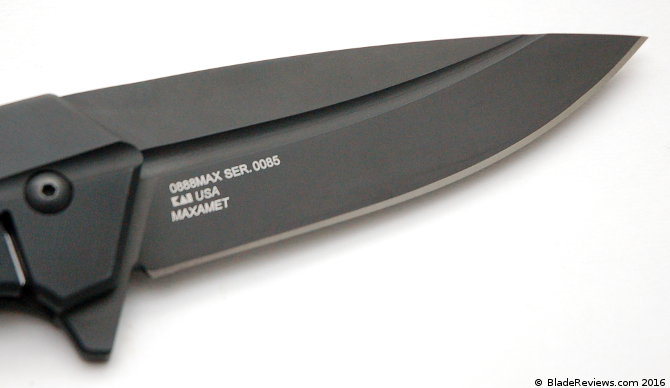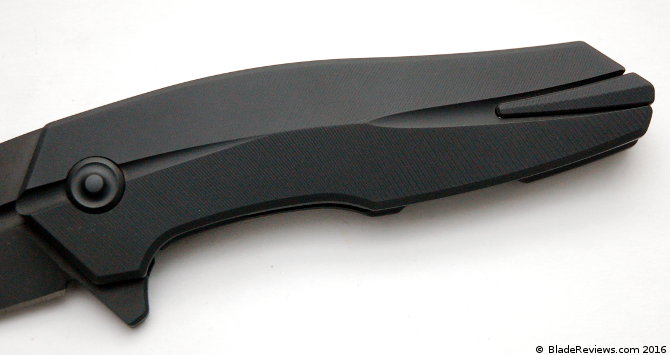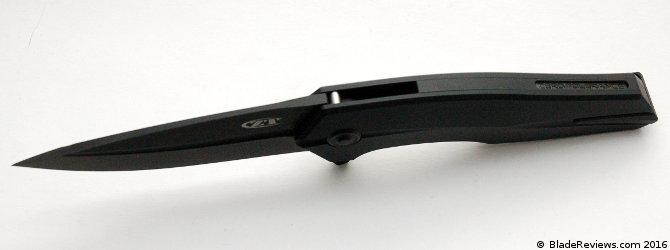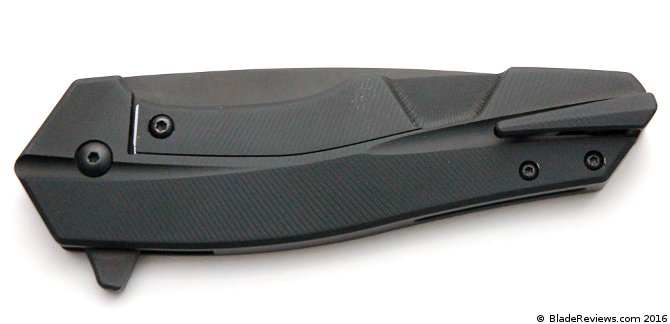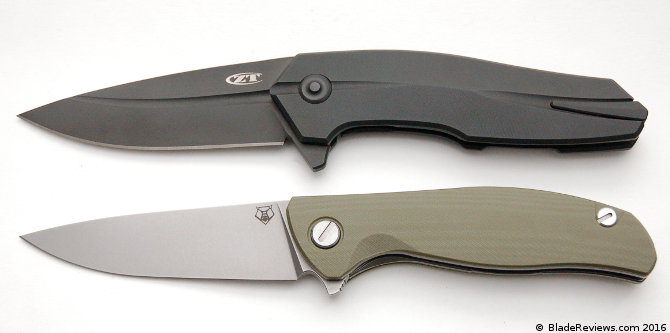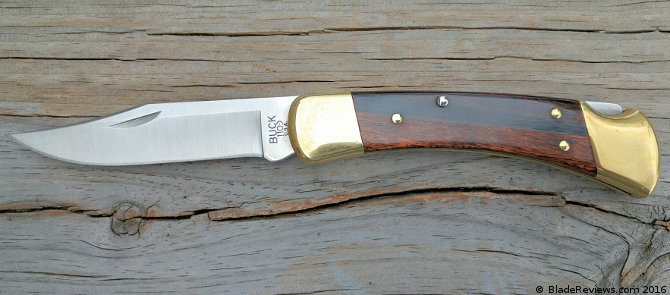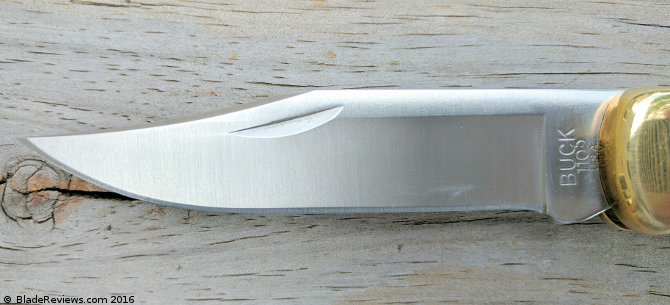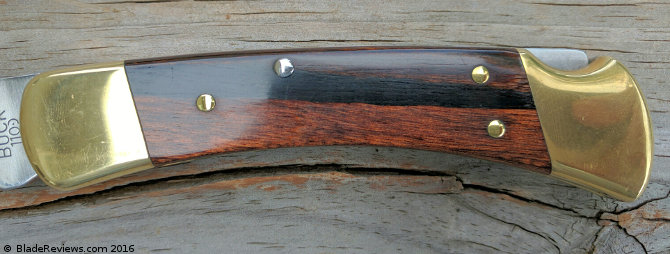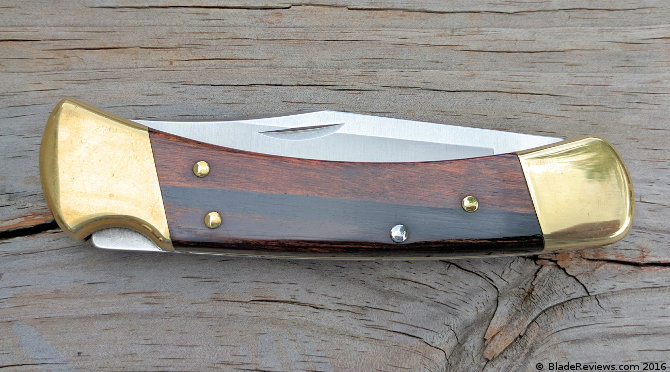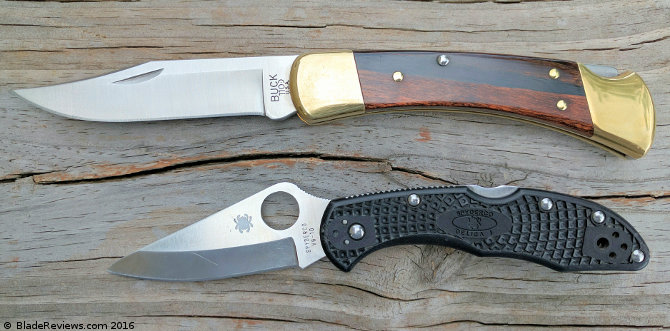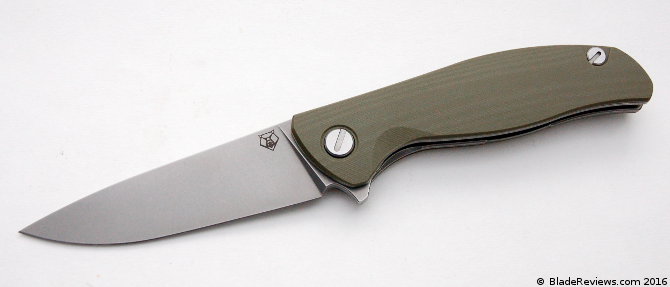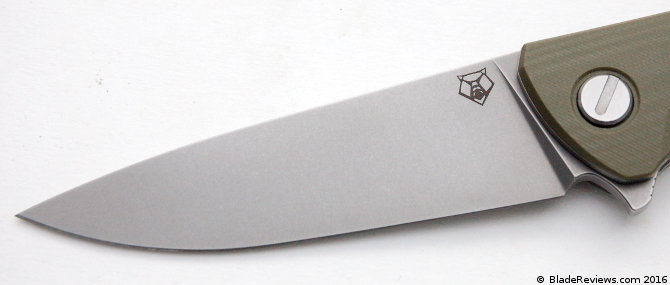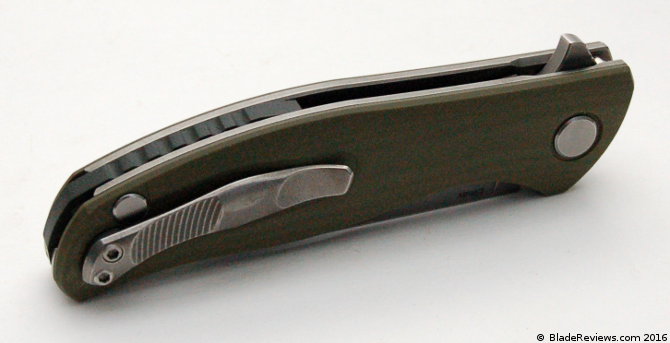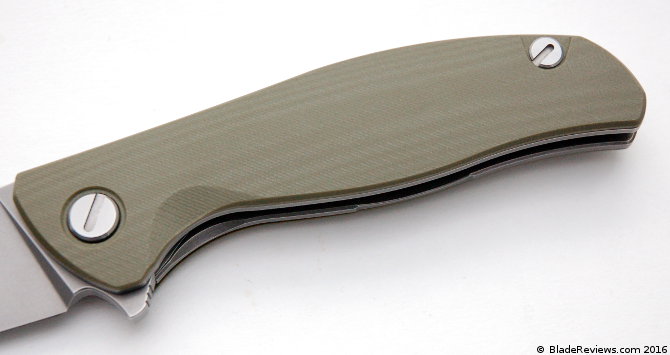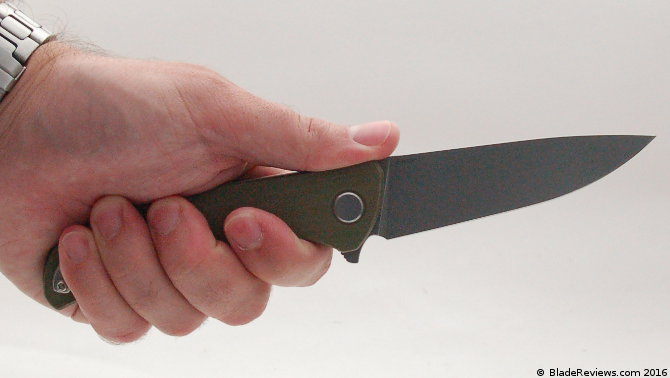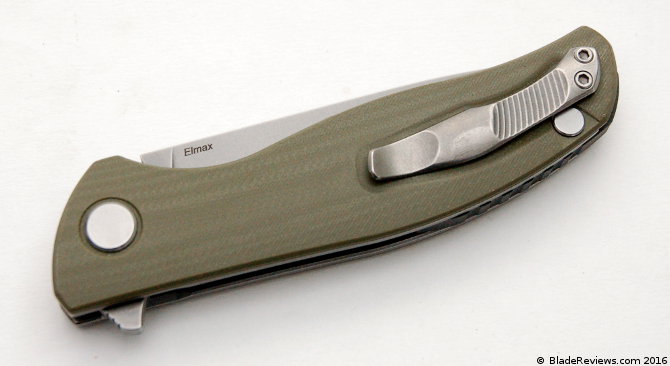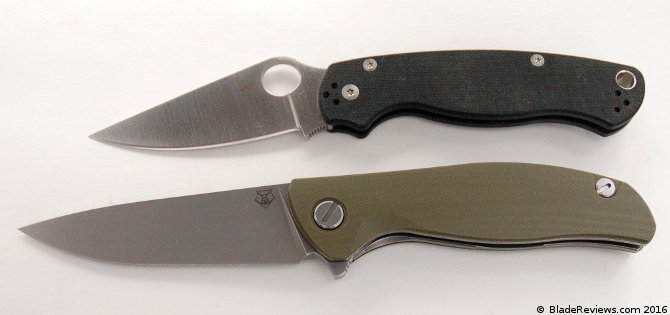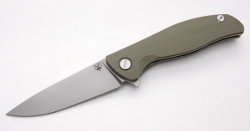Last Updated: July 31, 2019
I have lusted after the Pohl Force Mike One for years. I wanted one for years. For the uninitiated, Pohl Force is a tactical knife company owned by Dietmar Pohl, a long time knife collector, knife designer, knife enthusiast, and author of books on knives. I have met with Dietmar, and the USA distributors for Pohl Force a couple times at Blade Show.
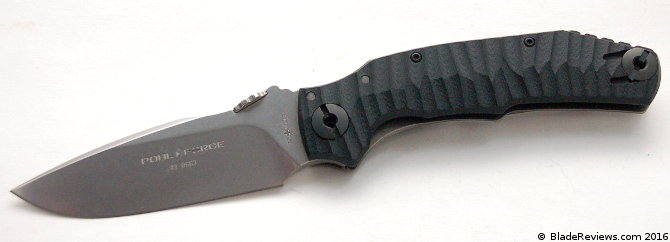
Buy Pohl Force Knives at BladeHQ
It was hard to walk away from the Pohl Force booth without a Mike One in hand, and I eventually broke down and bought one. I’m glad I did. Even 3 years later this knife is still awesome and unique. It’s like a European Strider with its integrated G10 handle scale/backspacer, not to mention the unique profile and finish work. But I’m getting ahead of myself. There is a lot to consider with the Mike One and I’m glad to present this review, even if I’m a little late to the Pohl Force party.
General Dimensions and Blade Details
The Mike One has an overall length of 8.66″, a 3.74″ blade, weighs 5.64 ounces. The Mike One is made by Lionsteel Knives in Maniago, Italy. This is advertised as the “EDC size” Pohl Force folder, and it certainly seems to be EDC (Every Day Carry) sized next to the Foxtrot One, which is a massive knife featuring a 4.5″ blade and overall length of 10.25″.
This Mike One is still a formidable knife, but could be a good size for EDC if you are a police officer, military member, or anyone else who can get away with a larger daily carry blade. Personally, this is not a daily carry as I tend to favor knives in the 3-3.5″ blade range for EDC.
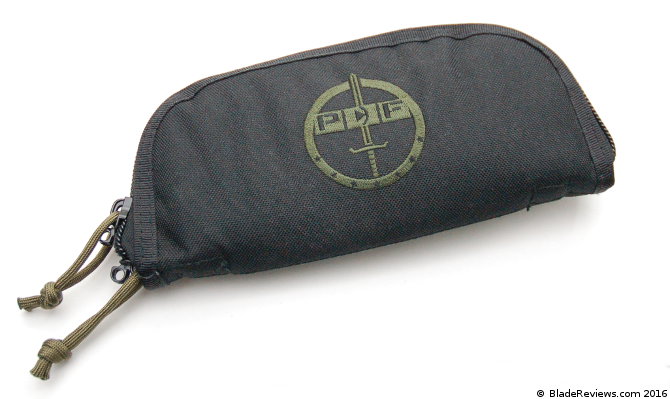
The Mike One sports a slender drop point blade with a high flat grind and swedge. This is a 5mm thick blade, which is quite beefy for a folding knife. While Lionsteel has done a nice job grinding the blade to a thin edge, this is still a stout blade with hard use in mind. The tip is formidable and there is plenty of cutting edge. It strikes me as a great well-rounded blade shape that could be pressed into a wide range of tasks.
My particular version of the Mike One is the “Outdoor” version with the stonewashed finish. There is also a black PVD coated “Survival” version. I favor this stonewashed version. The blade is still quite reflective despite the tumbled finish, and you can almost use it like a mirror.
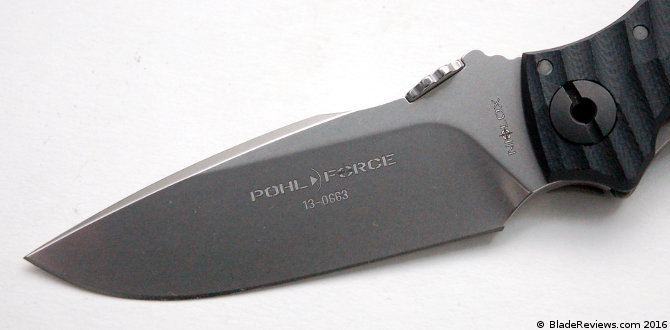
Niolox is the de facto steel for Lionsteel’s outdoor focused blades, and it’s a nice choice on this Mike One. I have some experience with Niolox after extensively testing the Blackwater Grizzly 6 and Ursa 6. Niolox has proven itself to be tough, yet reasonable to sharpen and resistant to corrosion. I think it’s a great choice and I’m excited to have the steel in a folder. I consider it to be a good upgrade over something like D2, with improved stain resistance.
Handle Design, Ergonomics, and Pocket Clip
As I alluded to earlier on, this knife comes with a beautifully sculpted black G10 handle slab and backspacer. Just like on the Strider SnG, this is a single piece of G10 that forms both the backspacer and non-locking side of the handle. Lionsteel kicked the production values up a notch by putting finishing the handle with a grooved pattern and also machining a geared backspacer. An equally impressive titanium framelock and black chain ring bolt hardware add further detail and visual interest to the handle. They did an awesome job and in my opinion, the build quality and finish work is higher than on that of the Strider.

The 50/50 forward finger choil and dual thumb ramps offer the end user a ton of grip options. You can choke up on the blade for detail work, or choke back for leverage per the below picture. Regardless of how you hold the knife it always feels comfortable and natural. The milled handle and backspacer compliment the handle design nicely by providing good traction without being irritating. There is little jimping, and the knife is comfortable to use, even after extended heavy cutting tasks like carving and push cutting rope.
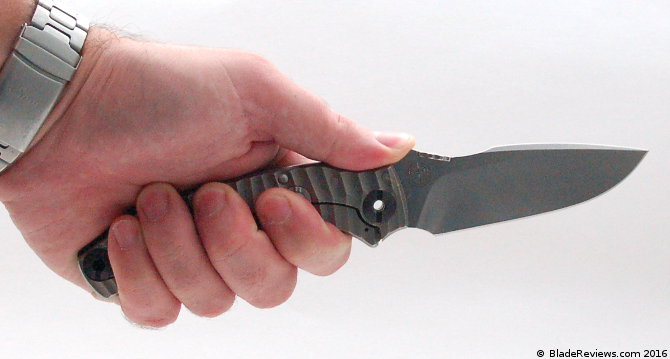
The Mike One features an oversize wire clip. Frankly I wasn’t aware of how much some people loathe the Spyderco wire clip. One commenter said that the Spyderco wire clip was “feeble” and that I was “feeble” for liking it. You gotta love the internet – that’s a strong opinion on a pocket clip!
At any rate, the Mike One’s wire clip is nothing like the Spyderco version, so if you don’t like the Spyderco clip you may like the clip on this Mike One. For starters, it’s a much stronger clip. The knife has great retention in the pocket between the tough clip and corrugated handle. This clip has some pant shredding potential, but it will never fall out of your pocket. While not a true deep carry clip, the Mike One still buries deeply and carries discretely thanks to the matte finish and stealthy nature of wire clips in general.
Despite this being a near 6 ounce knife the Mike One carries well thanks in large part to the sturdy clip. I occasionally forget I am carrying this one. I wouldn’t carry this in slacks, but for shorts, jeans, or work pants you will find that the Mike One behaves well in the pocket.
Deployment and Lockup
The Mike One makes use of a serrated thumb disk. Thumb disks are not my favorite method of deployment, but it works here. The thumb disk is removable, which makes the knife a 2-hand opener, and more appropriate in some of European countries. The action is slow and purposeful thanks to teflon washers. Again, teflon washers are not my favorite choice. I really would like to see phosphor bronze washers here, as I think the knife would open a little easier with them. The end result is that you have a knife that takes a fair amount of effort to open – especially when compared with the flippers of today. This is probably my biggest gripe with the Mike One.
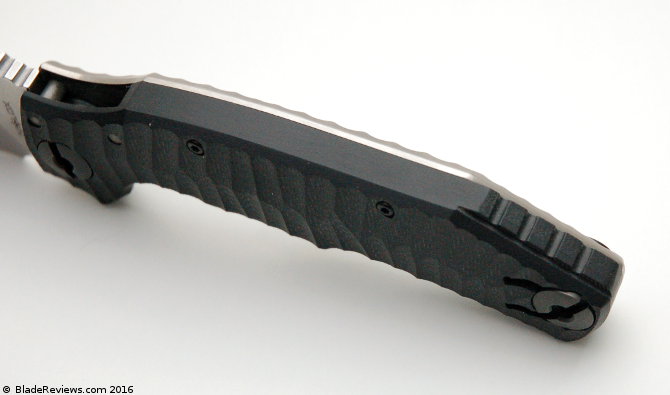
This is a titanium framelock, and here we have no steel insert. Lockup is extremely secure, opening with a heavy “click”. There is no blade play in any direction. Nor is there any blade stick. As far as titanium frame locks go, I think this one has been well executed. The end result is impressive and tank like. The Mike One is all business, and that shows in the deployment and lockup.
Here is a shot of it next to my LionSteel TM1:
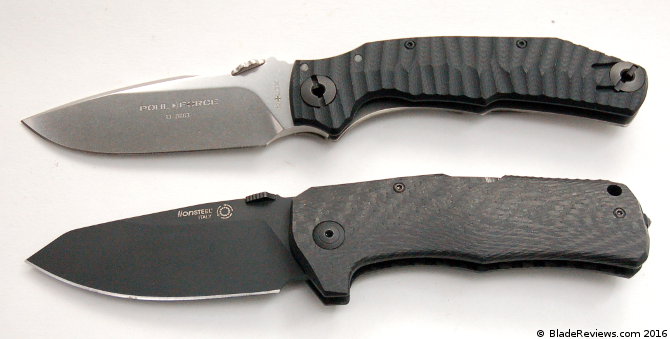
LionSteel did include their RotoBlock mechanism on the Mike One. The RotoBlock is an over travel stop that prevents the user from hyper-extending the lock bar, and it can also be twisted to lock the knife open. It’s an interesting feature, but not one I ever find myself using. It’s probably handy if you ever decide to test the limits of the Mike One. For regular guys like myself it will probably get in the way more than it will help. Blade centering is good on my knife. Not perfect, but pretty close.
Pohl Force Mike One Review – Final Thoughts
This review has been several years in the making, and I am glad to finally have one in the collection next to my Fantoni CUT Flipper and LionSteel TM1. This is another a unique and practical design that has been executed beautifully.
I prefer this smaller format to the larger FoxTrot One. I handled the FoxTrot One, and it’s almost comically large. While the Mike One is a more practical EDC than the FoxTrot One, I wouldn’t mind seeing something even smaller. 3.5″ blade is about as big as I will go for EDC, but I realize that Pohl Force is catering to more of a military and LEO crowd. So while this is more of a collectible for me than a daily carry, it is a fully functional knife and designed for use.
I also like how Pohl Force goes so far as to include an oversized zippered pouch, a “Zertifikat” of authenticity, and even a Tuff Cloth and a kydex sheath. Everything about the Mike One is top shelf, and clearly a lot of thought and care went into all aspects of this knife.
Although Pohl Force has ceased working with dealers effective June 2016, you can still find Pohl Force Knives at BladeHQ or possibly Amazon. Please consider that purchasing anything through any of the links on this website helps support BladeReviews.com, and keeps the site going. As always, any and all support is greatly appreciated. Thank you very much.
